The Knight version, or at least this one, had a darker grill than most of the Sonora models and "Knight" emblazoned across the front under the knobs. I couldn't find a Knight decal, which was OK since I didn't really like the look of it anyway. I can always put one on later. That band on the bottom did need to be restored. It was not too large and ads some personality to the cabinet.
|
This Knight - often sold under the Sonora brand, was another one of the radios in the group referred to in the previous post. It is one of those radios that is sometimes referred to as having an Ingraham cabinet. And,, in reference to this topic in particular, is one of the reasons that I would disagree. The Faux band at the bottom and the Repwood-like grill are not typical for cabinets made by Ingraham. Sealer and a couple of coats of lacquer applied here. Now time for the fun - and I do enjoy adding the faux finish. But I generally prefer cabinets that did not use it - Did you know that the 1932 RCA BI-Acoustic is almost completely photo finish? Anyway, back to the little radio. The Knight version, or at least this one, had a darker grill than most of the Sonora models and "Knight" emblazoned across the front under the knobs. I couldn't find a Knight decal, which was OK since I didn't really like the look of it anyway. I can always put one on later. That band on the bottom did need to be restored. It was not too large and ads some personality to the cabinet. Carefully heating the warped Tennite escutcheons allowed them to be straitened.
0 Comments
1931 RCA R-8 Superette ------or------- You really have to like this radio to want to work on it!7/14/2016 This 1931 RCA R-8 Superette was acquired with 3 other radios. I have always wanted one of these. The cabinet had been sanded here and there and top coated with a flat finish so it was going to need a refinish and a few knobs. As found - 8 tube R-8 chassis. Pretty much all of the caps and resistors you can see were supposed to be someplace else. The original cap can had been thrown away. Additional odd modifications included attaching the secondary of the interstage transformer to the cap on the IF amp tube and some really creative wiring to compensate for the replacement volume control which did not have the necessary AVC Tap. As with most radios I acquire, no attempt was made to power this one up prior to the rebuild but I really wonder if it ever worked after this "repair". With some luck, one of the fellows on the Philco Phorum site had an original cap can, so I was off to a good start. People hate these chassis. they were used in consoles like the R-10 with the same speaker, pictured below. In this case a GE J-85. This version uses 8 tubes with one dedicated to the AVC which was a step up from the 7 tube chassis. An even more cramped 9 tube chassis had push pull output tubes, So the chassis was about a cramped as they get. The resistors and caps, not found in the can, are mounted to a board which is mounted so that the parts are inaccessible. Both if the IF transformers are mounted under the chassis. So, if you are ever inspired to work on one of these, or the 7 tube version, or the 9 tube version, I have a few tips. First, completely remove the tuning cap. This is actually not hard at all. It will give you the room to work on the chassis. Remove the cap can. Cut the leads about a inch away from their connections. Leaving this pig-tail will help you find the point to reconnect the NEW cloth covered wire you will use in rebuilding the cap can. At this point I should mention that I have been finding more and more 1930s radios that need either a significant portion or all of the original cloth covered wire REPLACED. This has been true for rubber insulated wire for years now, but, as time passes more and more of the original cloth covered wire is becoming unsafe. The wire in a lot of Atwater Kent power supplies and that used in many AK power transformers also comes to mind. In all, I replaced about 80% of the wire in this chassis. Since you are going to replace much of the wire, the next step is only logical. Trying to turn the board over (above) with the wires connected is going to break the insulation on many of them. So just plan on taking it out, rebuilding it and reinstalling it with new wire. Pictured below with most of the dog-bone resistors replaced and the 2 caps rebuilt. The resistors were replaced with new recast resistors with at least a 2 watt rating for a better safety margin. And one resistor was put back were it was supposed to be. The big wire-wound on the left was probably not original Above - All of the stuff that was replaced. NOW, WASN"T THAT EASY? It looks a lot better. I did not expect it to work on the first try BUT IT DID! After an alignment and a little work on the cabinet, (Below) it was put on display. The original grill cloth had a couple of small defects but I decided to use it anyway.
|
AuthorRuss Webb Russ Webb & Fuzzy
Best Buddy, Radio fixer Categories
All
Archives
December 2023
|


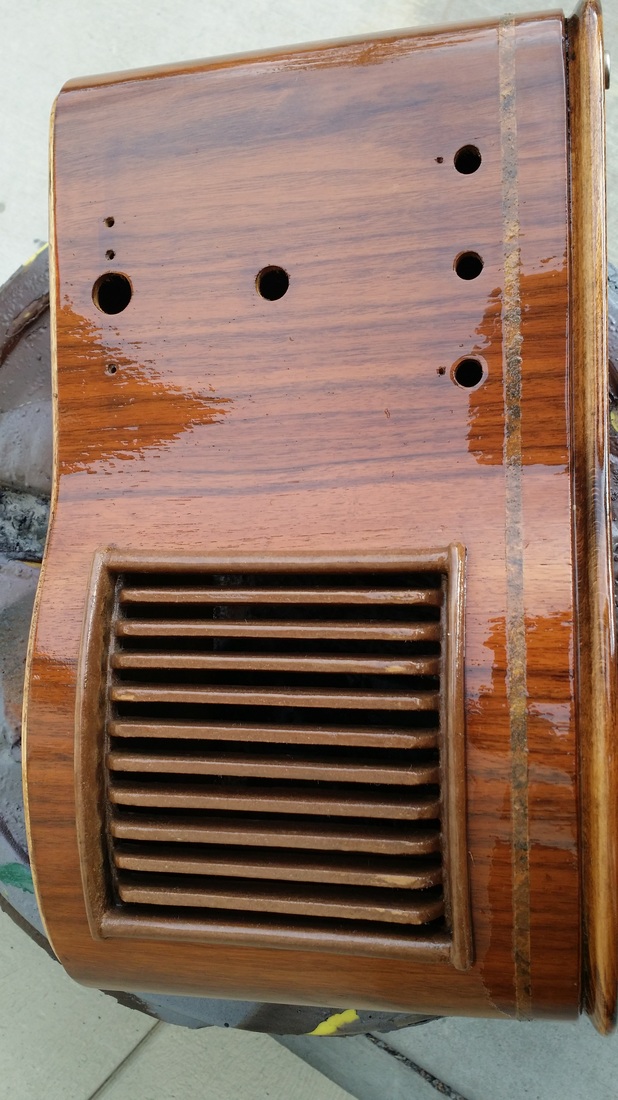
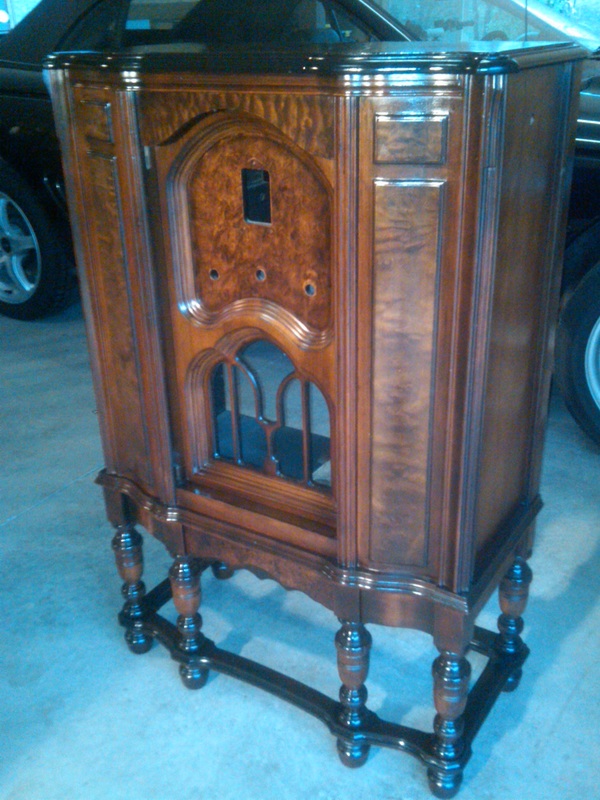


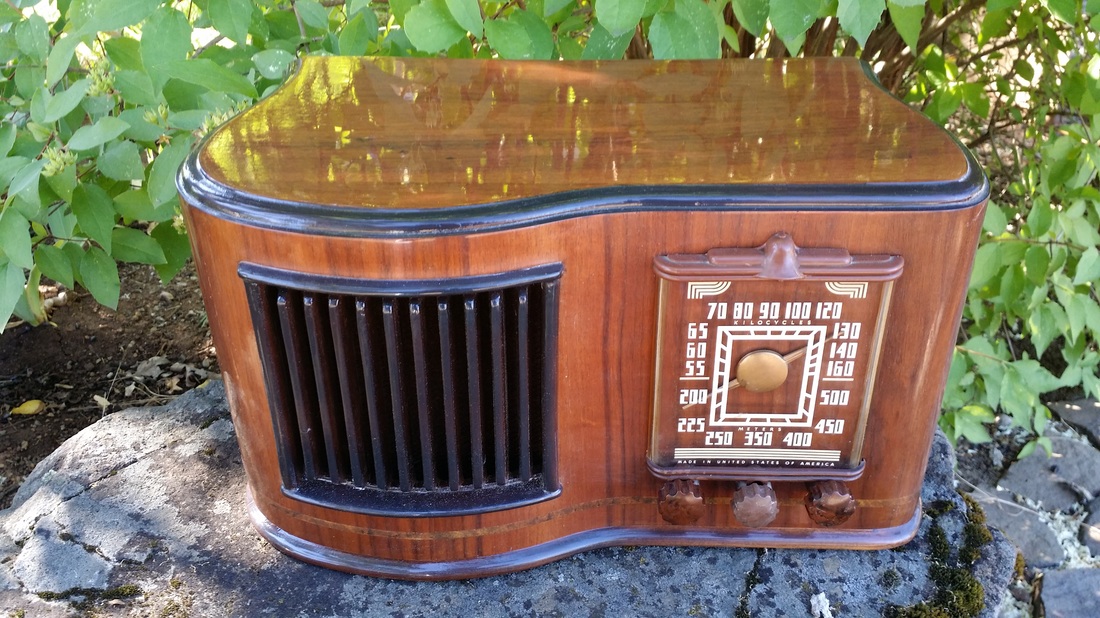





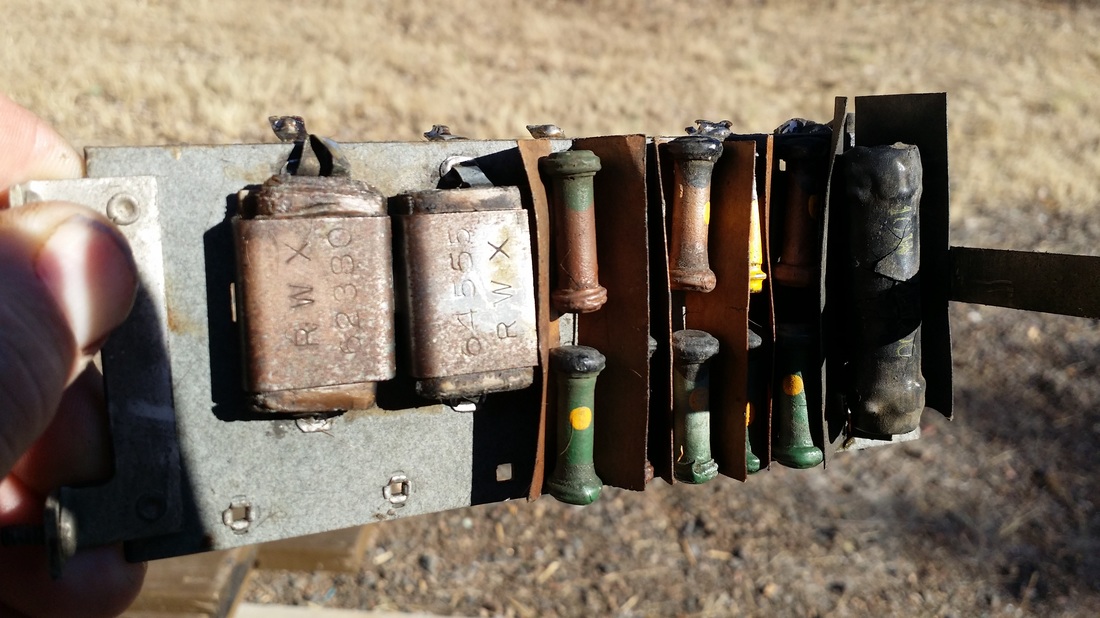

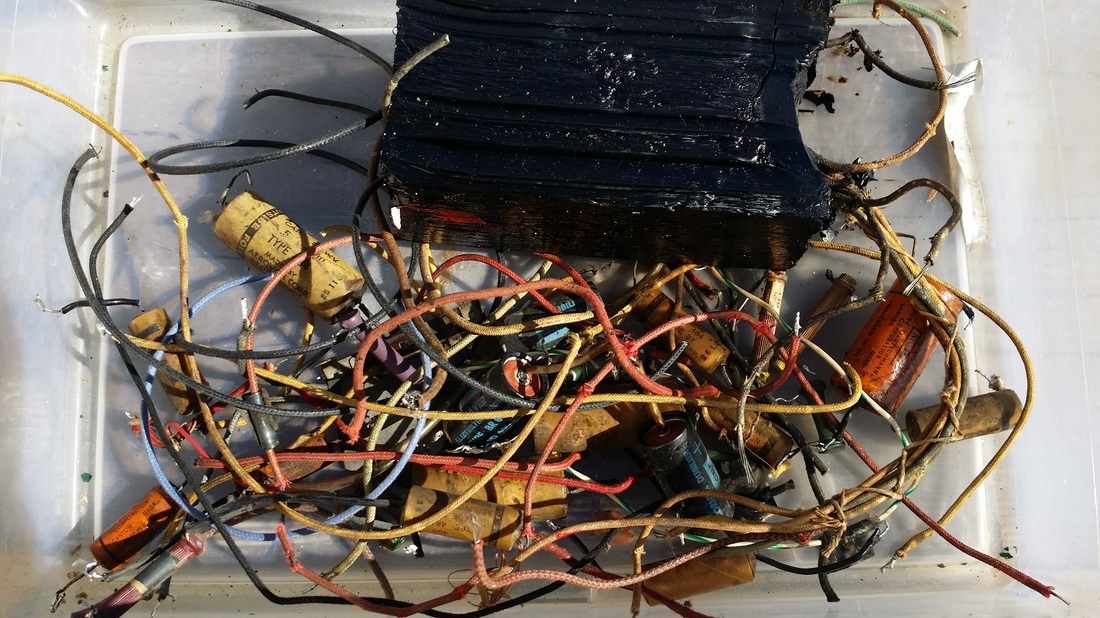
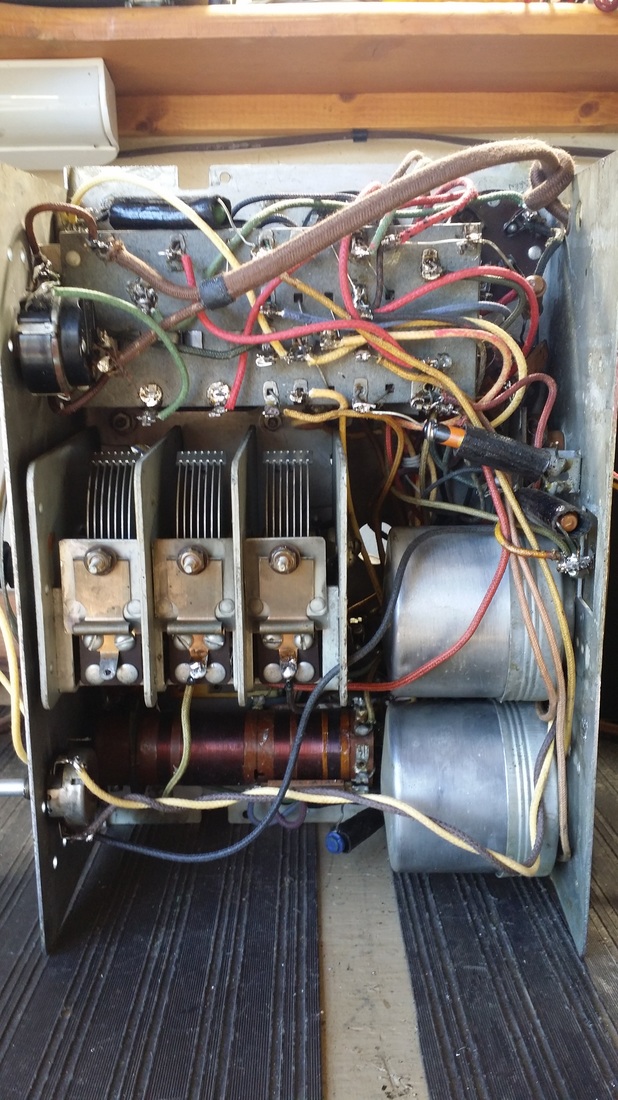


 RSS Feed
RSS Feed